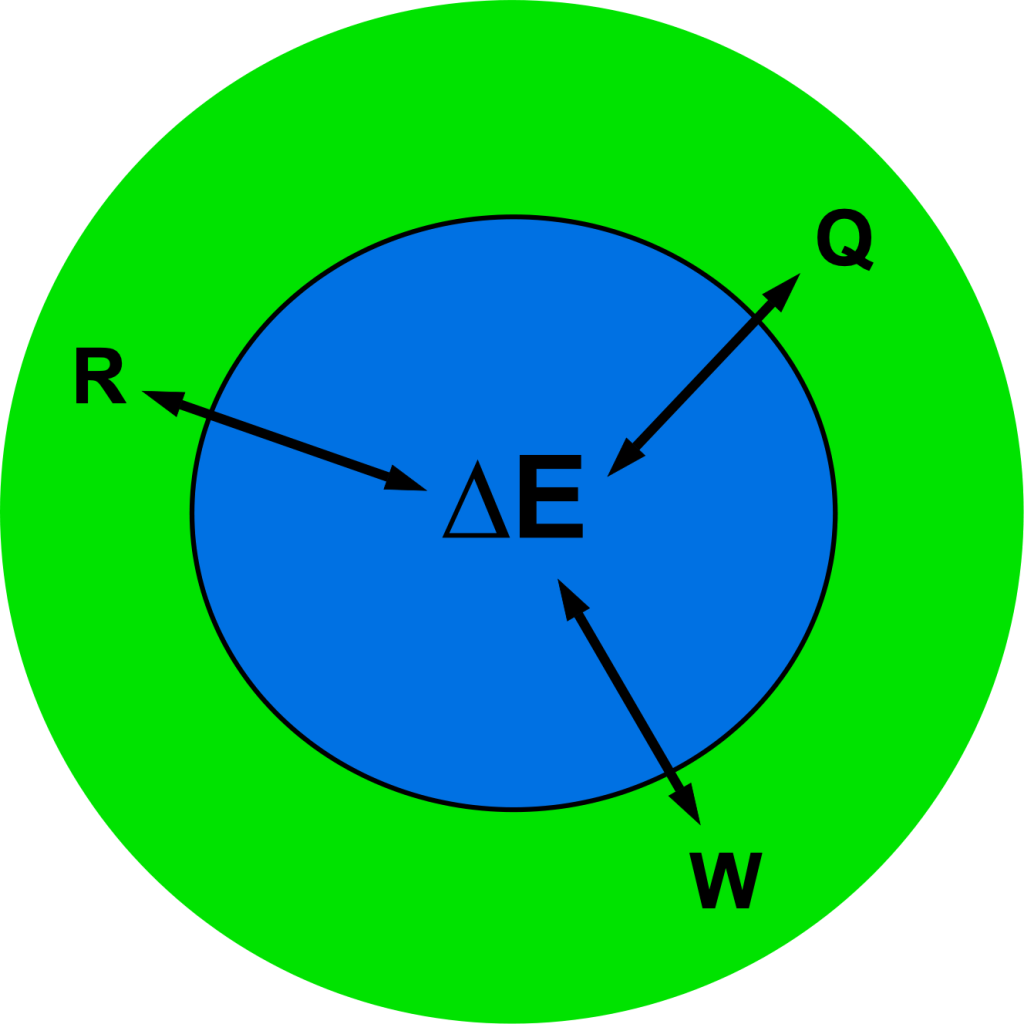Brief History
The concept of energy is something people find easier to describe than to define. Even the National Academy of Sciences in their Framework for K-12 Education dodges the question: “What is energy?” Modeling Instruction™ advocates a unitary energy concept; i.e., there is only one kind of energy. It may be stored in various ways in a system and transferred between system and surroundings by various mechanisms, but the energy itself does not change. The “forms of energy” locution implies that somehow energy is changing – diverting our attention from the changes in a physical system that we can describe.
Even though we recognize that energy is not a physical substance, we choose to use a substance metaphor to describe it. For example, we can liken energy to money. We store money in various accounts (checking, savings, certificates of deposit, etc.) attached to your name at the bank – consider this the system. There is nothing different about the money in these accounts. This money can be moved between accounts in the bank without changing the nature of the money or the total quantity of money that resides in this collection of accounts. Energy transfers between system and surroundings are like deposits to your account or payments made to another institution.
So, the four big ideas in Modeling Instruction’s treatment of energy are:
- Energy can be viewed as a substance-like quantity that can be stored in a physical system.
- When energy moves between “accounts” within a system or is transferred between system and surroundings, change occurs.
- Energy maintains its identity after being transferred.
- Energy is conserved; i.e., the total amount of energy in an isolated system is constant.
Energy can move to different places within the system and can be stored in different modes (accounts) but the sum of the energy in all of the accounts is a constant. In an open system, the total energy that was originally in the system, plus any that entered, minus any that left is equal to the energy that remains in the system.

There are essentially three ways in which energy can be transferred into or out of a system. The blue circle in the diagram at left represents the system; the larger green circle represents the surroundings. The double-headed arrows represent energy that could be transferred into or out of the system, thus affecting the nature of the energy storage in the system. These transfer mechanisms are:
Working (W) – The process by which energy is transferred into or out of a system due to an externally applied force.
Heating (Q) – The process by which energy is transferred into or out of a system through the collisions of a myriad of microscopic particles. This occurs when there is a difference in temperature between the system and its surroundings.
Radiating (R) – Radiating is the process by which energy is transferred by the absorption or emission of photons (particles of light).
The use of gerunds (rather than the standard terms: work, heat and radiation) stresses that W, Q and R are processes, not “forms” of energy.
When we consider the various energy storage modes or accounts, we find that there are two major categories for energy storage. Energy is either stored due to the motion of the parts of a system or due to the arrangement or configuration of the parts of the system. When parts of the system interact (via fields) such that they attract or repel each other, the energy stored in the field can change if the objects change their positions relative to one another. If the objects attract (pull toward) each other, the energy stored in the field will increase when the objects move farther apart. Alternatively, the energy stored in the field decreases when the same objects move closer together. On the other hand, for objects that repel (push away from) each other, the energy stored in the field increases when the objects move closer together and decreases when they move farther apart. Since we know of gravitational, electrical and magnetic fields, it stands to reason that we should have energy storage accounts associated with each of those fields. The table below lists the major energy accounts that we use to describe the storage of energy in a system.
Energy
can be stored due to
Motion
often called kinetic energy
Translational kinetic energy
Rotational kinetic energy
Thermal energy
Configuration (Fields)
often called potential energy
